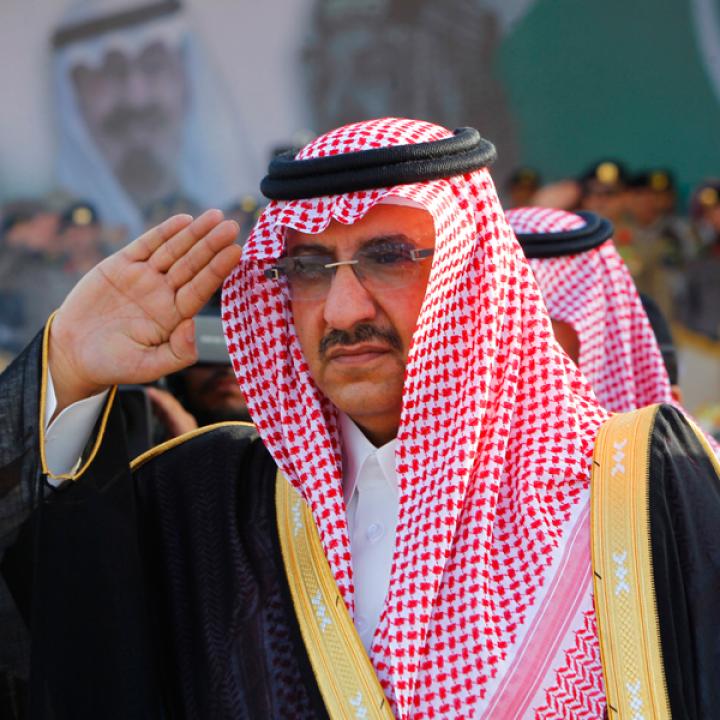

Assumptions about who will be the future ruler of Saudi Arabia -- the world's largest oil exporter and self-declared leader of the Islamic world -- need to be revised after the sudden resignation of one of the royal family's senior-most members. Today's surprise announcement that Interior Minister Prince Ahmed bin Abdulaziz has been relieved of his duties and replaced by his nephew, Prince Muhammad bin Nayef, introduces fresh elements of competition into the kingdom's ruling structure.
At 72 years old, Prince Ahmed is the youngest of the so-called "Sudairi Seven," the largest group of full brothers among the many sons of Ibn Saud, the modern kingdom's founder. In recent months, he had seemed to be emerging as a possible future king. The current monarch, King Abdullah, will turn 90 next year and is in failing health, while Crown Prince Salman (76) is widely reported to be in a poor mental state. When former crown prince Nayef bin Abdulaziz died in June, Ahmed replaced him at the Interior Ministry and organized last month's Hajj pilgrimage, an event that went off without mishap.
Prior to the latest news, Prince Muhammad bin Nayef had long served as assistant interior minister, charged with supervising the kingdom's counterterrorism efforts -- a role that he performed, according to many foreign officials, very competently. But he was not promoted to the vacant position of deputy interior minister during the summer, leading to speculation that he had been sidelined. Now, to the contrary, he has suddenly become the first of his generation to be awarded a senior ministerial post.
In succession terms, the question is now reopened regarding who is the likely "number three," that is, the new crown prince in waiting. Of the thirteen other surviving sons of Ibn Saud, it is difficult to identify any with the requisite combination of experience, respect, and, crucially, maternal pedigree (i.e., a mother who was not a concubine). This uncertainty has rekindled the issue of when succession will open up to the next generation.
The appointment of Prince Muhammad (53) will likely prompt jealously from some of his older and (until today) more senior cousins, namely Deputy Defense Minister Prince Khaled bin Sultan (63), Minister of State and National Guard commander Prince Mitab bin Abdullah (60), and Governor of the Eastern Province Prince Muhammad bin Fahd (62). Even his elder brother Saud (56), the head of the crown prince's court, could be included in this list.
It is too early to suggest that the new interior minister is an immediate candidate to be king, but besides experience and now seniority, he also has luck. In 2009, he survived almost unscathed when attacked by a suicide bomber who had evaded screening by hiding an explosive charge in a body orifice.
For the United States and others, the appointment will force observers to recalibrate their understanding of Saudi Arabia's power structure. And to the extent that the reshuffle was not predicted, it will spark new awareness of the opacity of the kingdom's decisionmaking.
Simon Henderson, the Baker fellow and director of the Gulf and Energy Policy Program at The Washington Institute, is author of After King Abdullah: Succession in Saudi Arabia.



